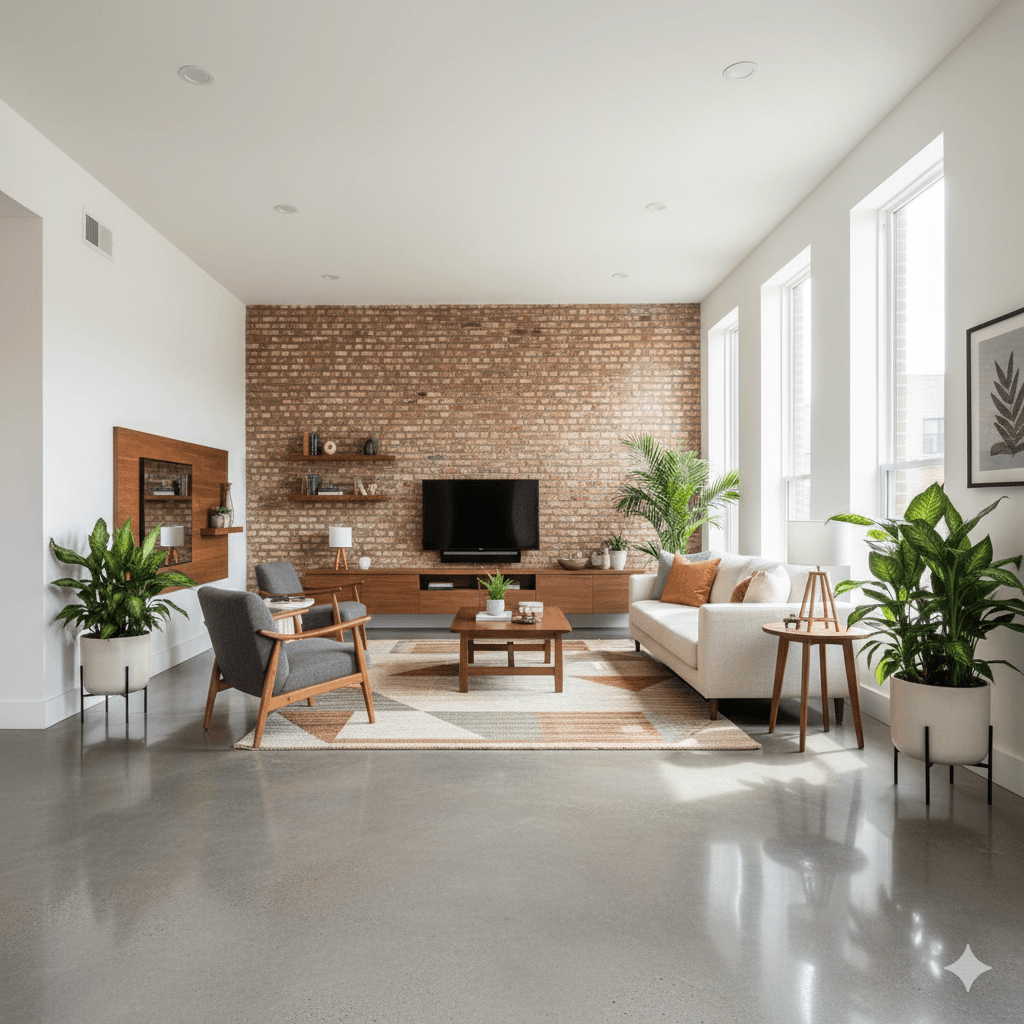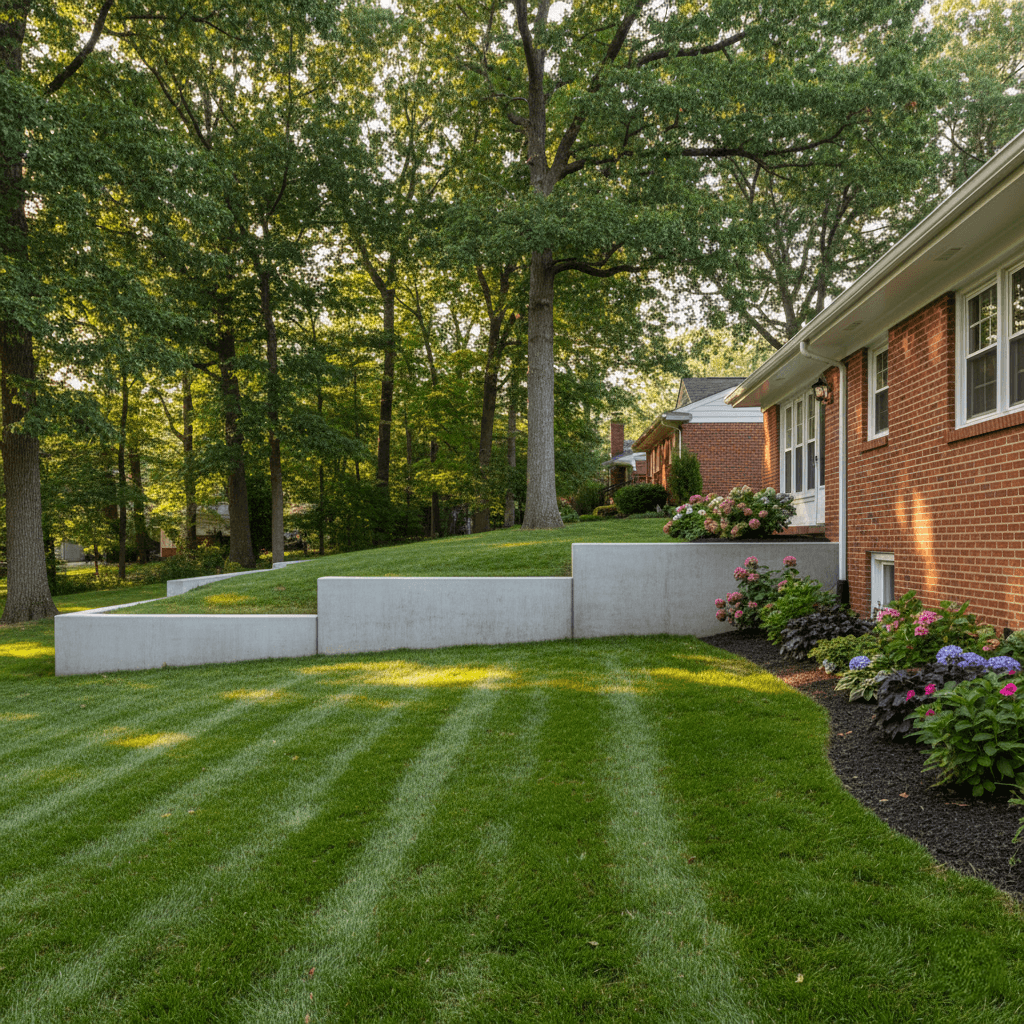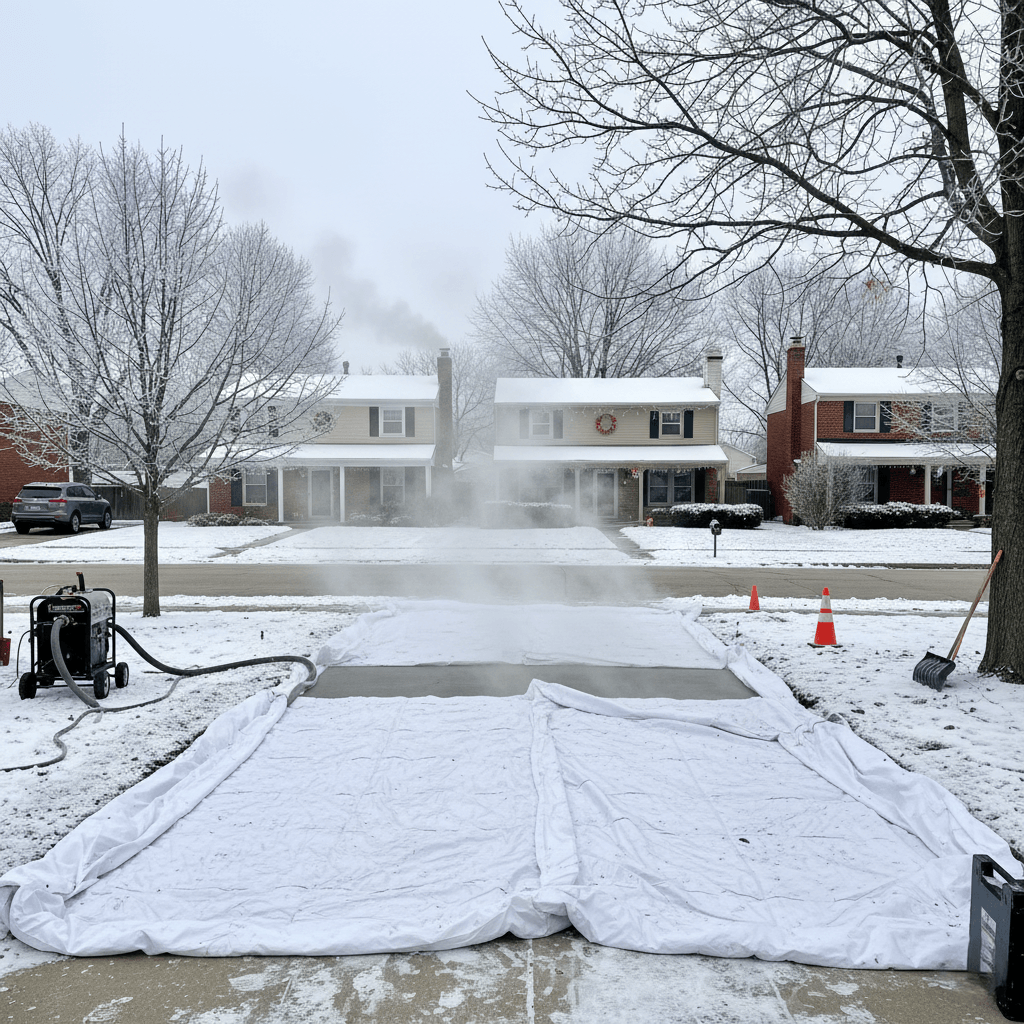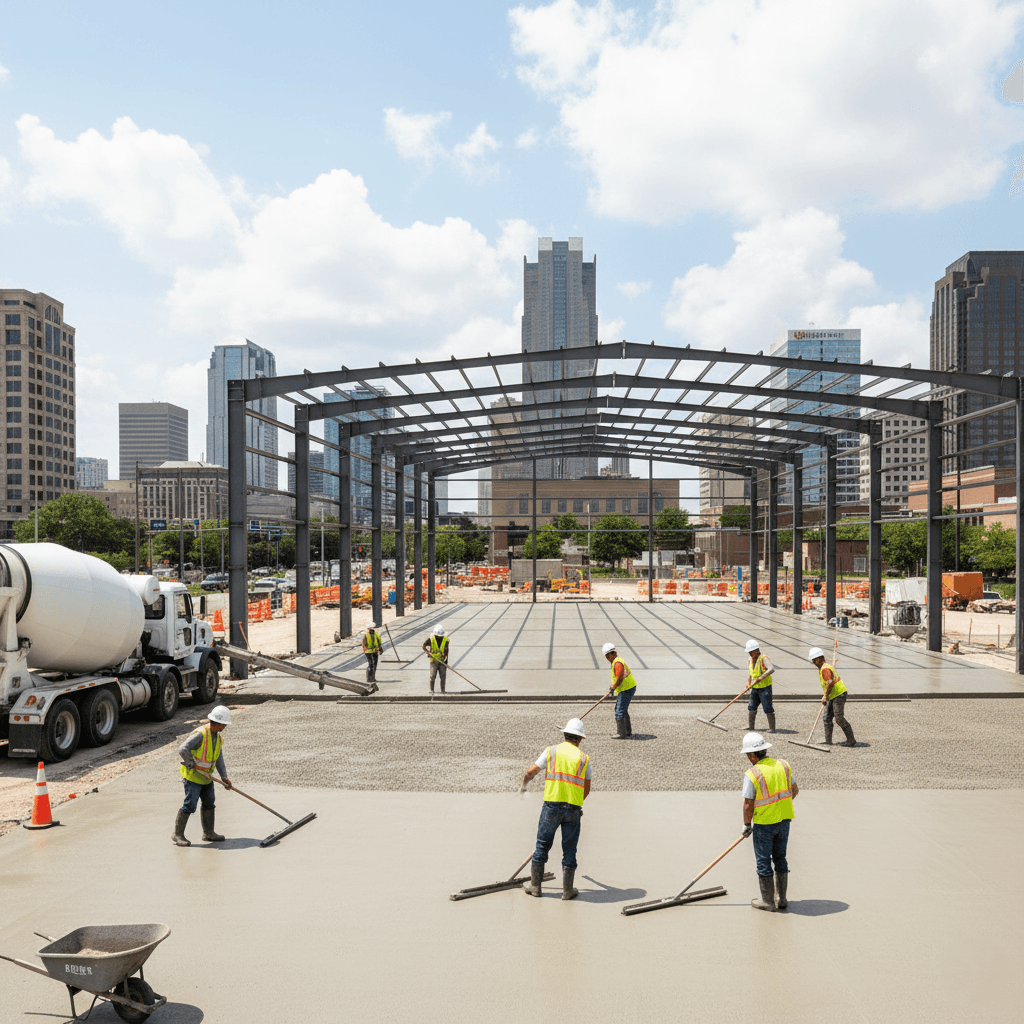
St. Louis Guide: Concrete Resurfacing vs Microtopping vs Overlay
Concrete Resurfacing St. Louis
St. Louis homeowners facing worn, stained, or damaged concrete surfaces encounter numerous restoration options, each offering distinct advantages for specific situations. Understanding differences between concrete resurfacing, microtoppings, and overlays helps you select the most effective and economical solution for your property. Missouri’s challenging climate with freeze-thaw cycles, humidity, and temperature extremes demands careful material selection for long-lasting results. Whether refreshing a deteriorated driveway in Richmond Heights or updating a pool deck near Creve Coeur, choosing the right restoration method ensures both immediate visual improvement and years of reliable performance.
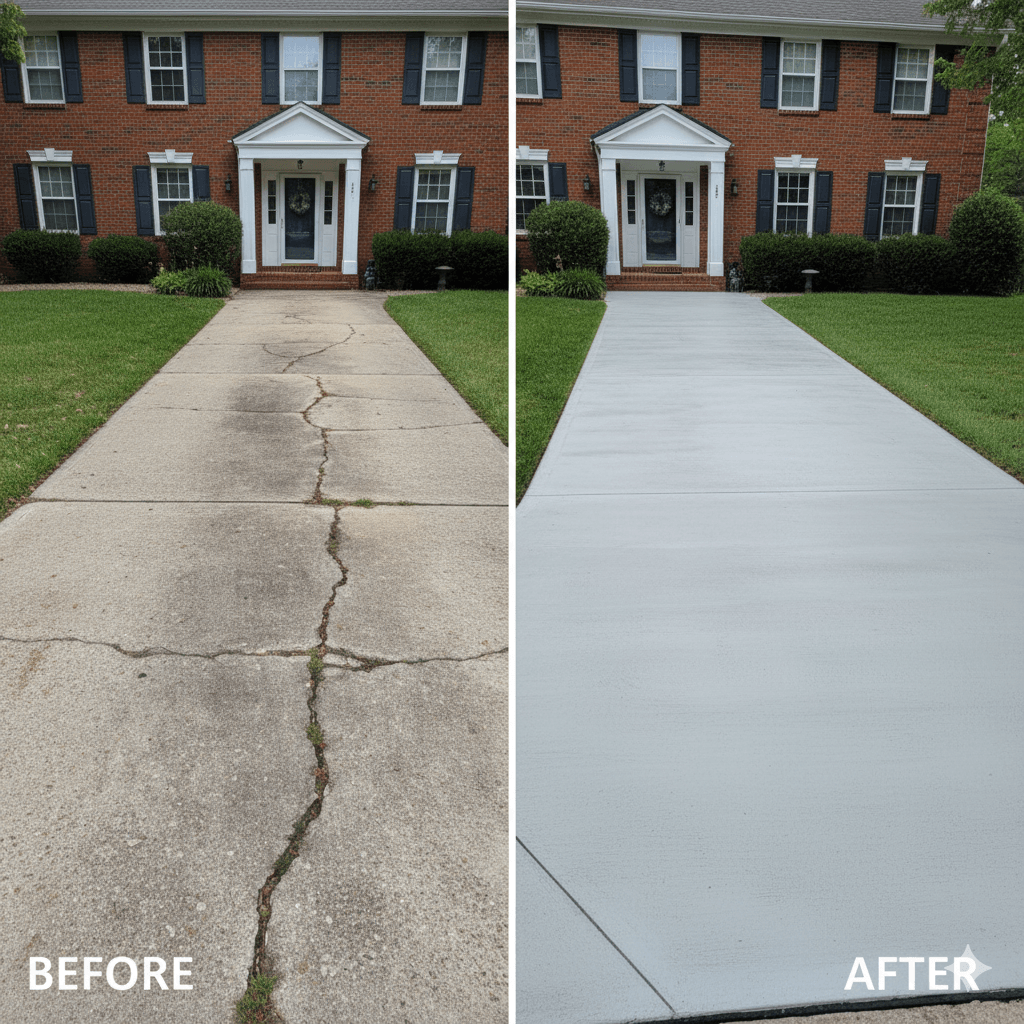
Understanding Basic Concrete Resurfacing
Concrete resurfacing applies a thin cement-based layer over existing surfaces to repair minor imperfections and refresh appearance. This economical method works well for structurally sound concrete suffering from cosmetic issues like surface staining, minor cracking, or weathering. The process involves thorough cleaning, repairing small cracks, and applying a resurfacing compound typically 1/8 to 1/4 inch thick. Contractors throughout St. Louis use this technique on driveways, patios, pool decks, and walkways. The resurfaced layer bonds molecularly with existing concrete, creating a durable surface that withstands typical residential traffic and weather exposure for 8 to 15 years with proper maintenance.
Cost and Application Considerations
Basic concrete resurfacing costs between $3 and $7 per square foot in the St. Louis area during 2025, making it significantly less expensive than complete replacement. A standard 500-square-foot driveway typically requires $1,500 to $3,500 for complete resurfacing, including surface preparation and sealing. Labor represents roughly 60 to 80 percent of total costs, with materials accounting for the remainder. Contractors complete most residential projects within one to two days after proper preparation. Properties throughout Webster Groves and Kirkwood benefit from this cost-effective solution when concrete remains structurally sound but looks tired. Furthermore, resurfacing allows various decorative options, including colors and textures, significantly upgrading aesthetics without major investment or lengthy project timelines.
Microtopping: The Ultra-Thin Solution
Microtoppings represent specialized overlay products applied in extremely thin coats, typically 1/16 to 1/8 inch thick. These polymer-modified cement-based coatings create smooth, uniform surfaces ideal for interior floors and specific exterior applications. The material bonds exceptionally well to properly prepared substrates, providing a fresh canvas for decorative treatments. Contractors apply microtoppings using trowels, squeegees, or specialized magic trowels, achieving finishes ranging from smooth and seamless to lightly textured. This versatile product works on concrete, ceramic tile, vinyl composition tile, and even properly prepared plywood substrates. Properties in Clayton and Ladue frequently utilize microtoppings for interior floor renovations, creating modern, polished appearances in basements and commercial spaces.
Interior and Specialty Applications
Microtoppings excel in settings where minimal thickness changes prove critical, such as doorway transitions or areas with clearance restrictions. The ultra-thin application preserves existing floor heights while dramatically improving appearance. Interior applications benefit from the smooth, tight-troweled finish that accepts stains, dyes, and decorative scoring beautifully. Some installers create Venetian plaster appearances on vertical surfaces using microtopping techniques. Material costs range from $2 to $4 per square foot, with professional installation adding $3 to $6 per square foot, depending on design complexity. Homeowners throughout University City appreciate microtoppings for transforming dated basement floors into attractive living spaces. Additionally, the smooth surface proves easier to clean and maintain than textured alternatives, making it popular for retail spaces and high-visibility commercial applications.
Standard Overlays for Durability and Design
Concrete overlays involve applying thicker layers, typically 1/4 inch to several inches, over existing surfaces to correct substantial imperfections or add decorative finishes. These robust systems handle more severe damage than basic resurfacing while providing extensive design flexibility. Contractors use overlays for both functional repairs and aesthetic enhancements, incorporating colors, patterns, and textures mimicking natural stone, brick, or tile. The increased thickness allows deeper stamped patterns and more dramatic texture variations. Overlay systems prove particularly effective for exterior applications throughout St. Louis, where weather exposure demands enhanced durability. Properties in Chesterfield and Ballwin frequently employ overlays for comprehensive patio and driveway renovations.
Decorative Possibilities and Performance
Stampable overlays specifically designed for pattern imprinting typically apply at 3/8 to 1/2 inch thickness, providing adequate depth for realistic textures. These decorative systems cost $7 to $20 per square foot installed, offering high-end appearances at fractions of natural material costs. The thicker application corrects surface irregularities that thinner products cannot hide, creating level, attractive surfaces from previously problematic concrete. Polymer-modified overlays deliver enhanced flexibility and crack resistance compared to standard concrete, performing well in Missouri’s variable climate. Installation requires bonding agents, ensuring proper adhesion to existing surfaces. Homeowners near Tower Grove Park and Lafayette Square choose overlays when seeking dramatic visual transformations combined with structural improvements that extend surface lifespan significantly.
Comparing Thickness and Material Requirements
Thickness differences fundamentally distinguish these restoration approaches, directly affecting costs, capabilities, and appropriate applications. Basic concrete resurfacing at 1/8 to 1/4 inch thickness suits surfaces with minor wear requiring cosmetic improvement. Microtoppings at 1/16 to 1/8 inch work where minimal build-up matters most, particularly indoors. Standard overlays ranging from 1/4 inch to multiple inches address substantial damage or enable extensive decorative work. Thicker applications consume more material, increasing costs proportionally. A 40-pound bag of resurfacing compound costing $30 to $75 covers approximately 120 square feet at 1/16 inch depth, but only 60 square feet at 1/8 inch and 30 square feet at 1/4 inch thickness.
Material Performance Characteristics
Standard resurfacing compounds utilize cement-based formulations designed for exterior durability. Microtoppings incorporate polymer modifications, enhancing workability and creating smoother finishes. Overlay systems often include additional polymers, fibers, or other additives to improve strength, flexibility, and bonding characteristics. Color hardeners applied to overlays actually increase surface density and abrasion resistance beyond plain concrete. Properties throughout South County selecting materials must consider specific exposure conditions, traffic levels, and aesthetic goals. Climate considerations prove especially important, as Missouri’s freeze-thaw cycles test material performance annually. Moreover, proper surface preparation regardless of product choice remains critical for long-term adhesion and performance, preventing premature failures that necessitate costly repairs or replacement.
Surface Preparation Requirements
All three restoration methods demand thorough surface preparation for successful outcomes and lasting performance. Contractors begin with aggressive cleaning using pressure washers, removing dirt, oil, stains, and loose material. Damaged areas require repair before applying new surfaces, with cracks wider than 1/8 inch potentially indicating structural issues needing professional evaluation. Surface profiling through grinding, scarifying, or acid etching creates texture, allowing mechanical bonding. Severely damaged or deteriorating concrete may prove unsuitable for resurfacing techniques, requiring complete replacement instead. Properties in Olivette and Overland evaluate existing conditions honestly before selecting restoration approaches, avoiding wasted investment on surfaces too compromised for overlay solutions.
Adhesion and Bonding Considerations
Bonding agents applied before resurfacing materials enhance adhesion between old and new concrete. These primers cost approximately $0.50 to $1 per square foot and prove essential for reliable performance. Moisture issues in existing slabs create bonding problems, potentially causing overlay failure through delamination. Professional contractors test moisture levels before proceeding with installations. Extremely smooth existing surfaces need profil, creating a rough texture for mechanical grip. Contaminated surfaces from previous sealers or coatings require removal, exposing clean concrete. Homeowners throughout West County benefit from professional assessments identifying potential adhesion problems before starting projects. Furthermore, rushing preparation stages to save time or money typically backfires, creating weak bonds that fail prematurely and necessitate expensive corrective work.
Climate Considerations for St. Louis Applications
Missouri’s climate significantly influences material selection and application timing for concrete restoration projects. Freeze-thaw cycles occurring throughout the winter months test overlay durability as trapped moisture expands when frozen. Properly installed systems with adequate bonding resist these stresses, while poor installations delaminate or crack. Summer heat and humidity affect curing processes, requiring contractors to adjust application techniques and timing. Spring and fall provide optimal conditions for exterior concrete resurfacing work. Properties in Florissant and Hazelwood scheduling projects should avoid extreme weather periods whenever possible. Temperature requirements typically mandate installations between 50 and 90 degrees Fahrenheit with no precipitation expected for 48 hours following application.
Long-Term Performance in Local Conditions
St. Louis humidity levels generally benefit concrete curing but can complicate sealer application and drying. Properly sealed surfaces resist moisture penetration, protecting against freeze-thaw damage. Decorative overlays require resealing every two to three years, maintaining protection and appearance. Basic resurfacing similarly benefits from periodic sealing, extending lifespan. Snow removal chemicals common in St. Louis can damage concrete surfaces, making sealer protection particularly important. Properties throughout Affton and Lemay must maintain sealed surfaces for optimal performance. Additionally, proper drainage design during installation prevents standing water and ice formation, protecting investments and reducing winter maintenance headaches while extending overall surface lifespan significantly beyond poorly designed installations.
Selecting the Right Solution for Your Property
Choosing between concrete resurfacing, microtopping, and overlay systems depends on several critical factors specific to each property and project. Existing concrete condition represents the primary consideration, as minor cosmetic issues suit basic resurfacing while substantial damage requires thicker overlays. Budget constraints influence decisions, with basic resurfacing proving most economical and decorative overlays commanding premium pricing. Aesthetic goals matter significantly, as simple refreshing differs from a complete visual transformation. Interior versus exterior location affects material selection, with microtoppings favoring indoor applications and standard overlays performing better outdoors. Homeowners in Des Peres and Wildwood evaluating options should obtain professional assessments from experienced contractors familiar with local conditions and project requirements.
Professional Consultation Benefits
Experienced contractors evaluate existing surfaces, identifying structural issues that resurfacing cannot address. They recommend appropriate products for specific applications, ensuring materials match intended uses and exposure conditions. Professionals provide accurate cost estimates, including necessary preparation work, material quantities, and realistic timelines. Their expertise prevents costly mistakes that inexperienced installers commonly make. Licensed contractors carry proper insurance protecting homeowners from liability during installations. Properties throughout Maplewood and Brentwood benefit from professional guidance in navigating complex material choices. Moreover, quality installations backed by contractor warranties provide peace of mind that DIY projects cannot match, justifying professional costs through superior results and long-term performance guarantees protecting significant home improvement investments.
Maintenance Requirements and Longevity
All three restoration approaches require ongoing maintenance for optimal longevity and appearance. Regular cleaning with mild detergents and water removes surface dirt, preventing buildup. Pressure washing annually or semi-annually maintains a fresh appearance. Sealing every two to three years protects surfaces from stains, moisture, and wear. Addressing small cracks or damage promptly prevents minor issues from becoming major problems. Basic resurfacing typically lasts 8 to 15 years with proper care. Microtoppings in protected interior locations can serve 15 to 20 years. Quality overlays often exceed 20 to 25 years when maintained properly. Properties in Crestwood and Sunset Hills maximizing investment returns follow recommended maintenance schedules consistently.
Cost-Effectiveness Over Time
Comparing long-term costs reveals important insights about relative value. Basic concrete resurfacing at $3 to $7 per square foot delivers 10 to 15 years of service, costing approximately $0.30 to $0.60 per square foot annually. Overlays at $7 to $20 per square foot lasting 20 to 25 years cost roughly $0.30 to $0.90 per square foot annually. Complete concrete replacement at $8 to $15 per square foot for basic installations lasting 30 to 40 years, calculates to $0.20 to $0.50 per square foot yearly. When existing concrete remains structurally sound, resurfacing provides excellent value. Severely damaged surfaces may justify replacement despite higher initial costs. At St. Louis Concrete Works, we help homeowners throughout the metro area select optimal concrete resurfacing solutions matching their specific needs, budgets, and aesthetic preferences, delivering professional installations that restore beauty and functionality to exterior surfaces for years of reliable service and enjoyment.

